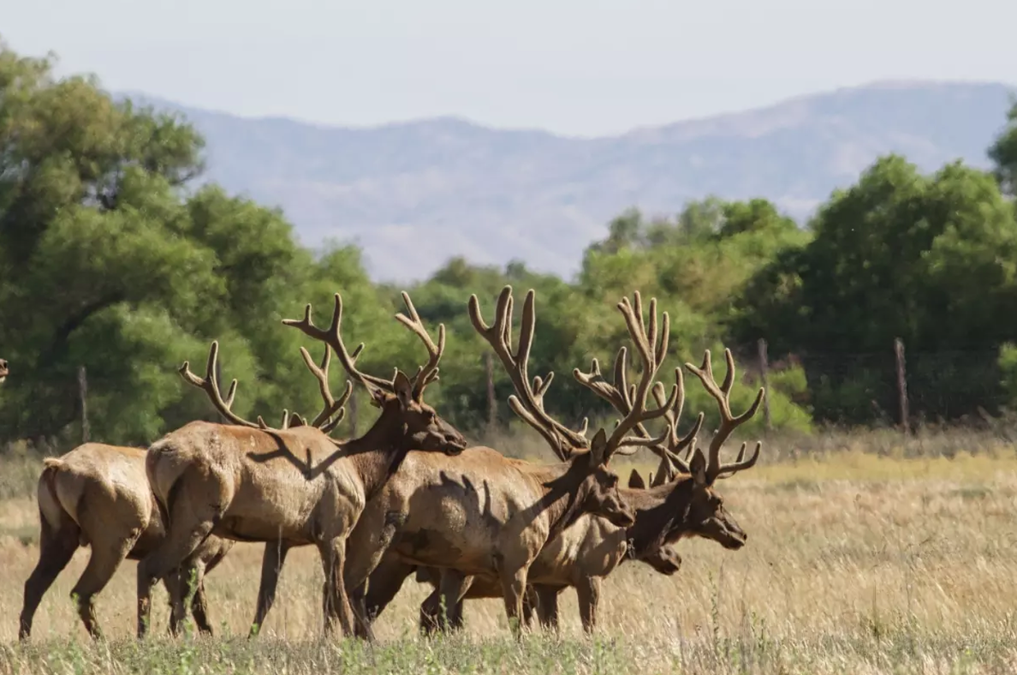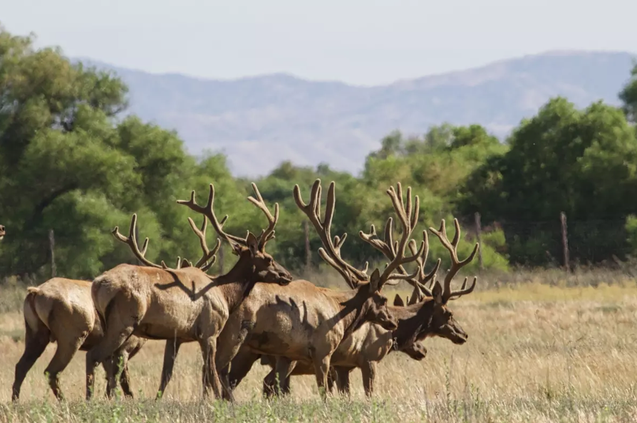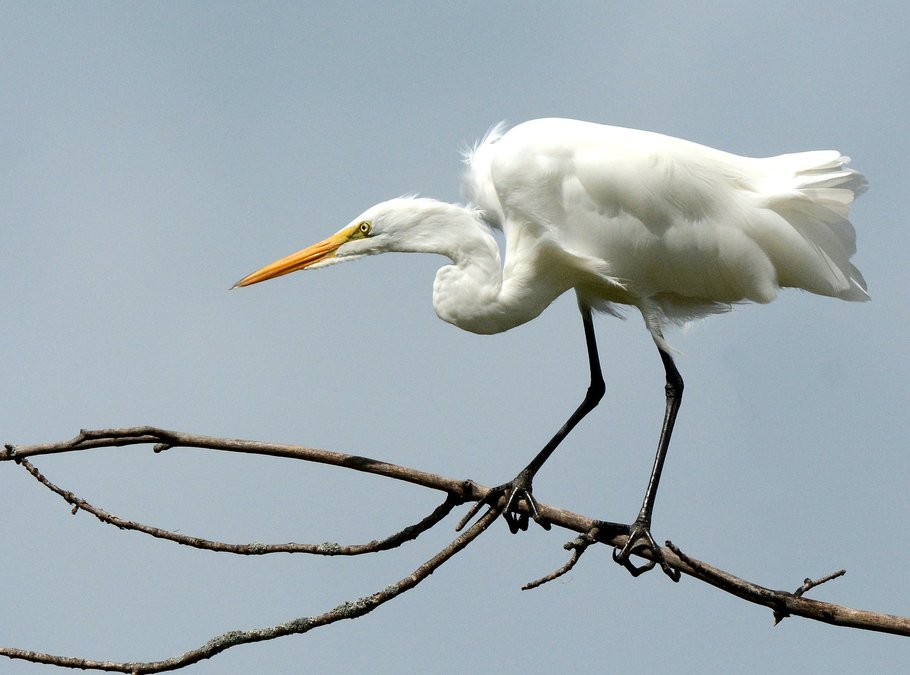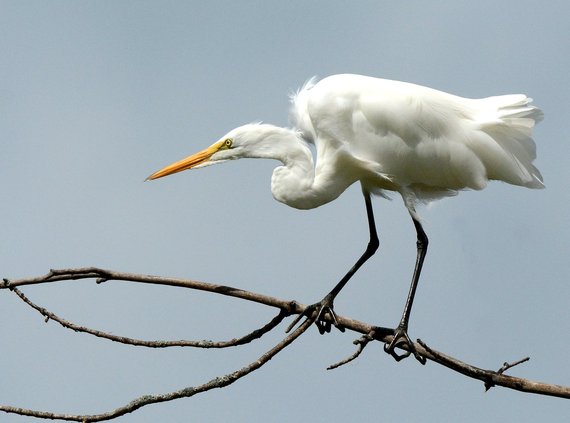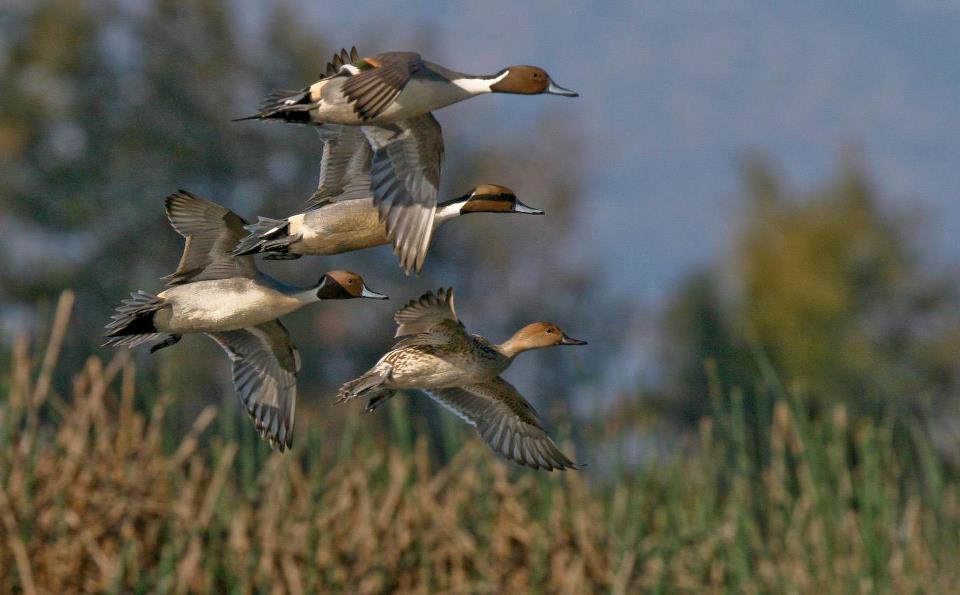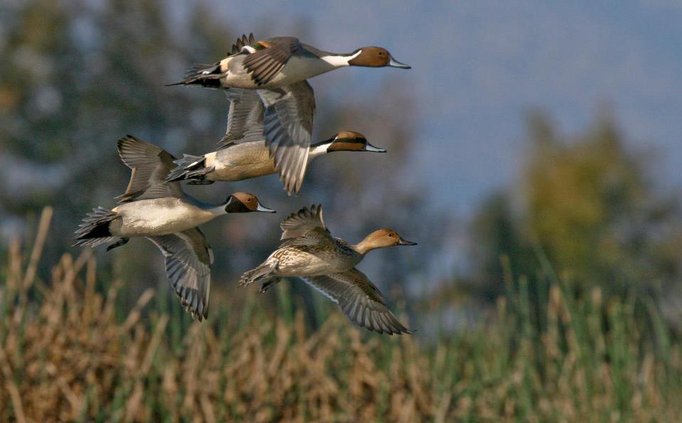The Northern San Joaquin Valley is literally for the birds — and other creatures such as the endangered riparian brush rabbit and tule elk.
It is where you will find more than 72 square miles of wetlands and grasslands as part of the San Luis National Wildlife Refuge Complex.
The northern most unit of just over 7,000 acres is just 10 miles south of Manteca as the egret flies.
It is the San Joaquin River Wildlife Refuge nestled along the San Joaquin, Stanislaus, and Merced rivers.
Another 60 air miles to the south you’ll find the other two units of the complex — the 26,000-plus acres of the San Luis National Wildlife Refuge and the 10,200 acres of the Merced National Wildlife Refuge.
It is worth doing research now on the birds that will be flying in to winter in the Northern San Joaquin Valley or to make a prolonged “pit stop” on nature’s feather version of Interstate 5 for moving through the Pacific Coast — the Pacific Coast Flyway.
The flyway in the coming months will be a peak migration time for many species. Keep in mind, though, that you see various birds as well as mammals such as tule elk year-round.
As such the coming weeks and months are viewed as an opportune time to enjoy nature, both by “birders” and those that just want to get a snippet of the creatures, birds, and terrain that helps make the San Joaquin Valley as well as California unique.
Best kept secret in
Manteca’s backyard
You likely could ask those that call Manteca home — whether they are new arrivals or have been around a number of years — for directions to the San Joaquin River Wildlife Refuge and find few that even know it exists let alone tell you how to get there.
It consists of 7,000 acres of wetlands, riparian woodlands, as well as grasslands at the confluence of the San Joaquin and Stanislaus rivers. The refuge also stretches to where the Tuolumne River joins the San Joaquin.
It is one of the two key reasons why the Aleutian cackling geese has made a roaring comeback to more than 100,000 birds since the 1970s when their numbers slipped below 1,000. The wintering habitat you’ll find here helped the Aleutian cackling geese become delisted as an endangered species.
Part of the revival also involved removing predators from their nestling grounds in the Aleutian Islands of Alaska.
It goes without saying if you want to savor the sights and sounds of Aleutian cackling geese and other migrating waterfowl along the Pacific Flyway the best time is from mid-October to early March.
But thanks to a massive riparian woodlands restoration project, the refuge is teeming with life year-round.
At one time riparian forests lined virtually every valley river.
Today, more than 95 percent of them have disappeared.
The largest remaining stand unaided by man is across the river from the refuge at Caswell State Park along the Stanislaus River. You can reach the state park by taking the Austin Road exit in Manteca off Highway 99 and driving south to the end of the road to the park’s entrance.
The refuge, thanks to the restoration effort, gives you more of a true glimpse of what riparian woodlands looked like over a century ago in California.
More than 500,000 native trees and shrubs were planted on 2,200 acres in the river’s floodplain to make it the state’s largest riparian woodlands.
The list includes a mixture of oaks, cottonwoods, willows, wild roses, blackberries, and more.
This is where two other endangered species have been making a comeback.
One is the riparian rabbit. Once prevalent throughout the valley, their numbers in the early 1990s had dwindled to less than three dozen located along the Stanislaus River in and around Caswell State Park.
A partnership with California State University, Stanislaus and its Endangered Species Recovery Program has improved the riparian rabbit’s future. They captured and bred the riparian rabbits and introduced them to the restored riparian woodlands. Today, the San Joaquin River Wildlife Refuge boasts of the world’s largest riparian rabbit population.
The restored woodlands are where you will find the last Bell’s vireo population. Other songbirds run the gamut from warblers and orioles to grosbeaks and flycatchers.
Most of the refuge is off limits to people as it was created for wildlife. There is a 4.3-mile loop dubbed the Pelican Nature Trail that you can access. Also from October to March the Beckwith Road viewing platform is open from dawn to dusk to take in the flocks of Aleutian cackling geese and other waterfowl.
There are no fees to hike the Pelican Nature Trail. There is also parking that you can access off Dairy Road. You can bring dogs but they must be on a leash.
It goes without saying you need to bring water, sun screen, and bug spray. This really is a throwback experience to what the valley once was like — lots of insects, lots of sun, and teeming wildlife although what you’ll see is only a fraction of what it was in the late 19th century when Tule elk and the California grizzly bear roamed the valley.
If you’re looking for a walking workout challenge, this isn’t it. The trail is flat and mellow. You will always come across wildlife whether it’s garden variety rabbits, lizards, or quail plus a repertoire of other small mammals and birds that will vary with the season. There are also bathrooms at the trailhead.
Be ready for solitude. You can hike the four-mile loop and often not come across another human creature. Binoculars and spotting scopes are a plus to carry with you.
Wildlife photographers can be seen at times pointing their long lenses at the wildlife and landscape. They tend to hit the area in the early morning or early evening when photographic opportunities are at their prime with the wildlife being the most active and the lighting more interesting. If you’re looking for more of a nature experience and not just solitude and a little exercise, follow the lead of the camera hounds and hit the trail in early morning or early evening.
The trail does bring you near the southern bank of the Tuolumne River.
The Pelican trail is reached by taking Airport Way to the south out of Manteca, crossing the San Joaquin River, and then turning south on Kasson Road.
The road changes names when you cross the Stanislaus County line. You keep going straight and cross Highway 132 and past Vernalis.
You can find almost any species of duck in the fields surrounding this community of 45,000 on the fertile west side of the San Joaquin Valley except for Donald.
Los Banos is ground zero for the largest concentration of wildlife refuges in the Greater Central Valley that during the course of a year experts estimate more than a million birds find their way to — or reside year-round.
And the prime visiting months to take in the most birds at the United States Fish & Wildlife Services’ complex is December and January with October and November offering the next most plentiful viewing periods.
If you can make plans at some point in the coming weeks for a visit especially to the more intense units around Los Banos, it is well worth the trip.
The San Luis National Wildlife Refuge Complex consists of three complexes with 45,000 acres of wetlands, riparian habitat including woodlands, and grassland.
They are in addition to another 90,000 acres of conservation easements that serve as key wintering grounds — and stops — along the Pacific Flyway.
Combined, they are home to almost 300 species of birds.
The list runs the gamut from wintering ducks, geese, and swan to raptors and grassland songbirds.
There are also 70 mammals, including 55 of the 200 plus species that are native to California.
The marquee animal is the California tule elk.
One of three North American elk subspecies that include the Rocky Mountain elk and Roosevelt elk, massive herds of California tule elk once roamed the valley where the now extinct California grizzly bear was its biggest predator. The last California grizzly bear died a century ago.
The California tule elk almost joined the California grizzly bear as a lost species.
The decision to establish a 780-acre enclosure at the San Luis refuge in 1974 stopped that from happening.
Eighteen of the animals transplanted from zoos in San Diego and Detroit were used to start the recovery process in San Luis.
Since then, California tule elk from San Luis have been re-introduced elsewhere in California, including the Diablo Range south of the Altamont Pass, and the Point Reyes National Seashore.
The refuges also support native flora that ranges from vernal pools — that are seasonal wetlands that are dry by summer but support unique “micro” flowers found nowhere else — to riparian woodlands.
Visiting complexes
near Los Banos
The San Luis National Wildlife Refuge unit north of Los Banos offers more than 21 miles of auto tour routes and 20 miles of hiking paths among the three components that are accessible to the public.
The best way to appreciate the undertaking and its impacts as well as fully enjoy the birds, mammals, and scenic vistas jammed with wetlands, grasslands, and riparian habitats is to start with the visitors center open Monday through Saturday from 8 a.m. to 4:30 p.m.
It is to the north of Los Banos and takes a somewhat circuitous route to reach but is worth it.
The visitors center offers educational presentations in the form of displays and such that in itself is worth a trip to Los Banos.
It is arguably the only place where you can get such a concentrated, CliffsNotes style overview of the San Joaquin Valley’s grasslands, wetlands, and riparian habitat.
There is even an area where you can use binoculars attached to a panel with seating at a large window to scan a portion of the California tule elk enclosure to try and get a glimpse of the stately elk.
The visitors center is also where the five-mile auto route around the perimeter of the elk preserve starts and ends plus a similar eight-mile auto route for bird watching.
There are also some hiking trails.
You need to stay in your car most of the time. That said, cars make the perfect mobile blind to take in birds without spooking them.
To fully enjoy your visit, binoculars are a must. Cameras with telephoto lenses are a big plus, as well.
A look at the birds et al
throughout the year
The following is what you can expect to encounter as the refuges make their way through the calendar:
October
*Aleutian cackling goose numbers increasing at San Joaquin River NWR
*Beckwith wildlife observation area at San Joaquin River NWR opens for the season
*Greatest bird diversity occurs during fall and spring migrations
*Juvenile snakes emerge
November
*Wetlands fully flooded
*Sandhill cranes are abundant
*Ross’ geese arrive
*Tiger salamanders begin trek to vernal pools to breed
*Large numbers of ducks present
December
*Snow geese begin to arrive at San Joaquin River NWR
*Swans may arrive in small numbers
*Watch for eagles, falcons, and ferruginous hawks
January
*Numbers peak for geese and ducks
*Bald eagles often observed perched and hunting where migratory birds are concentrated at feeding and nesting areas
*Winter sees greatest diversity of raptors
February
*Great horned owls hatching
*Hawks exhibiting aerial courtship displays
*Large numbers of wintering waterfowl and cranes visible
March
*Waterfowl begin migrating north
*Hawks and herons begin nesting
*Shorebird numbers building
*Snakes encountered basking in the sun
*Beckwith wildlife observation area at San Joaquin River NWR closes for the season as geese and cranes migrate north
April
*Wildflowers in bloom
*Seasonal wetlands are drained to allow waterbird food plants to grow
*Peak number of shorebirds
*Summer neotropical songbirds begin arriving
May
*Peak nesting time for hawks and herons, and early nest fledging begins
*Shorebirds are migrating in breeding plumage
*Songbirds are very vocal defending nesting territories
*Tiger salamanders return to burrows as vernal pools dry
June
*Shorebirds migrate north
*Seasonal wetlands are dry
*Songbird, heron, and raptor fledglings are visible
July
*Seasonal wetlands are irrigated to encourage waterbird food plants to thrive
*Fall shorebird migration begins
*Coyote pups out exploring their territories
August
*Swainson’s hawks have fledged and will form “kettles” over grasslands
*Irrigated pastures attract ibis and long-billed curlews
*Some early northern pintails arrive
September
*Sandhill cranes begin returning mid-month
*Aleutian cackling geese begin returning end of the month
*Greater white-fronted geese begin arriving
*Songbirds migrate south
*Monarch butterfly fall migration peaks
*Black-tailed deer rut begins
For downloadable brochures and information on the overall complex, go to fws/gov/refuge/san-luis and for the San Joaquin River component go to fts/gov/refuge/san-joaquin-river
To contact Dennis Wyatt, email dwyatt@mantecabulletin.com
